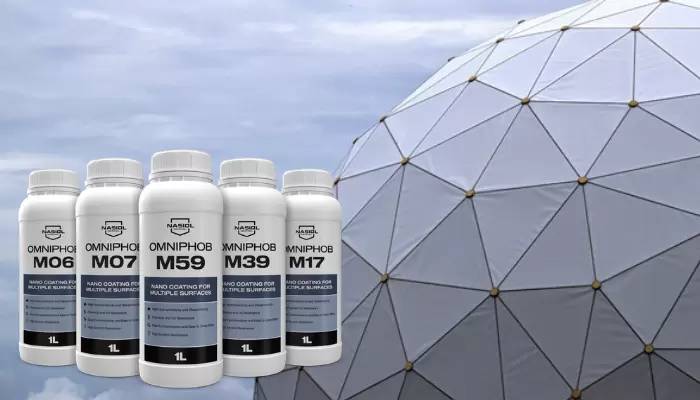A powerful tool called radar is used to detect and track objects. Initially, it was used in the military, but now they are being used in air and terrestrial traffic control, radar anti-missile systems, aircraft anti-collision systems, ocean surveillance systems, outer space surveillance, rendezvous systems, meteorological precipitation monitoring, altimetry, and flight control systems, guided missile target locating systems, self-driving cars, and ground-penetrating radar for geological observations.
As we all know, the radome is the compound word for “radar” and “dome.” Radomes are defensive coverings. Usually, two materials are used in the formation of radomes such as fiberglass and composite plastics that cover radar antennas. Outdoor microwave or radar antennas are always placed in the open air. Radars can be affected by various factors, such as weather, terrain, interference, and clutter. Radome safeguards the fragile radar equipment from environmental hazards, including debris, mold, wind, storms, snow, ice, and dust. Solar radiation in nature can directly hit the radar antenna. As a result, it reduces antenna precision, service life, and working reliability.
Radomes are structural waterproof enclosures that protect the radar. Engineering plastics such as ABS and polycarbonate are mostly preferred in the construction of radomes because of their cost, sustainability, durability, and dielectric properties. Some of these factors are the accumulations on the radome surface.
In this blog, we will talk about how to protect radomes from external factors:

Radar vs. Radomes – What’s the Difference?
Radar equipment is delicate and needs to be protected, and radomes are the sheath that protects it and ensures the smooth flow of radar signals. Radar, on the other hand, is a system that detects objects by using radio waves. Moreover, it comprises several elements, like transmitters, receivers, signal processors, and antennas.
Radar is machinery that identifies objects. While radomes safeguard radar systems. Radar’s utility and efficiency are dependent on radomes, as external factors affect its efficiency.
Are Radomes Affected by External Factors?

Yes, radomes are significantly affected by various environmental factors. Weather conditions, such as rain, wind, terrain, and snow can affect their performance. Great exposure to sun rays can damage the radome surface over time. The impact of debris can ruin it. Therefore, proper measures need to be taken to address this issue and ensure optimum efficiency.
How Crucial is it to Protect Radomes?
Over time, dirt and water accumulation on the surface of radomes affect the strength and direction of the radar signal. However, with high-frequency signals, any dirt covering the antenna absorbs more of the energy, and the direction of the beam may also be diverted. A deposit of uneven thickness covering part of the antenna can redirect the beam by about 1.5 degrees. For a radar with a narrow beam angle, this can cause problems because the return echo will not be directed straight back at the antenna, leading to a loss of signal strength. Apart from that, condensation and steam can cause reflection from the product surface to be obscured by “noise” from water droplets.
The significance of shielding radomes is undeniable. Protecting radomes will also protect the radars, which will make them work effectively. Radomes should be guarded properly for effortless signal transmission and reception. Proper cleaning techniques and UV-resistant coatings can do a great job. Ignoring these factors causes radome deterioration and may lead to expensive repairs.
How do we Protect Radomes from External Factors?
To alleviate potential damage, there are solutions like nanocoating, especially the Nasiol Omniphob Series of Nanocoatings, powered by nanotechnology, that can be used to supply better-quality surface protection. These coatings aim to generate a protective barrier on radome surfaces. They prevent dampness and moisture buildup, fungus formation, and discoloration. The best feature of nanocoatings is their brilliant knack for delivering outstanding resistance to cracking and decay; they also boost the durability and endurance of radome structures.
Nasiol nano coatings prevent water and dirt accumulation on radome surfaces. Surfaces can be cleaned with just rain, saving water and energy spent on cleaning. Radome surfaces remain cleaner for longer, allowing radars to operate at higher performance levels.
Here are some of the benefits Nasiol Omniphob offers:
- Water and oil repellency
- Chemical and UV resistance
- Easy to clean
- Scratch resistance
Nasiol Omniphob Protection for Radomes
Surface protection is inevitable for radomes, as it surrounds radar systems. This site is usually exposed to intense environmental conditions such as heavy rain, windy storms, UV damaging rays, and airborne irritants. These elements can corrupt the functionality of radomes over time; without suitable protective measures, radomes will be endangered. One successful way to save radomes is by using nanocoating products such as Nasiol Omniphob series of nanocoatings. Nasiol nanocoatings shield radome surfaces from dirt and water buildup. Even rain can clean the surfaces, reducing the need for water and energy spent on cleaning. Radome surfaces maintain their cleanliness over extended periods, enabling radars to function at higher levels.
Nasiol Omniphob Nano Coating Products have been crafted with precision and aims to provide advanced protection to several surfaces, such as thermoset and thermoplastic exteriors commonly found in radomes. Nanocoatings repel water and oil; they have dirt-repelling and stain-shielding properties. Nanocoatings neatly form protective layers that curtail the accumulation of irritants and contamination on the surface. Nasiol Omniphob integrates nanotechnology to offer high-quality flawless surface protection for radomes.

The application of nanocoatings like Nasiol Omniphob series is a simple and quick procedure that skilled professionals execute. Before applying nano coatings, the surface is cleaned comprehensively; a clean and dust-free surface will ensure strong bonding.
Benefits of Nano Coatings
After successfully applying nano coatings on the radome surface, the coatings start working their magic by forming a transparent defensive layer that guards the surface against external factors.
The deep and rich durability of nanocoatings guarantees long-term fortification. The nano-coated radomes are well protected and remain unaffected even in intense environmental conditions. The cherry on the top is the versatility of Omniphob Nano Coating Products; their utility serves an extensive range of surfaces above and beyond radar enclosures. These nanocoatings promise to deliver excellence and precise solutions for the protection and aesthetics of various materials.
Who is Nasiol, and What are Nasiol Omniphob Nano Coating Products?
Nasiol is the Brand of Artekya Technology Ltd company specializing in nanotechnology-based protective surface coatings. And the company Artekya is one of the main manufacturers of those nanocoatings in the world. They offer a range of products designed to protect surfaces from water, dirt, stains, and other environmental damage. Nasiol’s products are used in various industries, including automotive, marine, home care, and industrial applications.
Their coatings often feature advanced hydrophobic and oleophobic properties, providing long-lasting protection and enhancing the durability and appearance of treated surfaces. Nasiol Omniphob products are a line of advanced nanocoatings designed to provide superior protection and hydrophobic/oleophobic properties to various surfaces for the industry. These products are formulated to repel water, oils, dirt, and other contaminants, protecting against UV, temperature changes, and rust, making the surfaces easier to clean and maintain.
Final Thoughts
In conclusion, safeguarding radomes from external environmental factors is crucial for ensuring their interrupted functionality and durability. Nano-coating products like Nasiol Omniphob come with a remedial solution by delivering high-quality fortification against oil, water, dirt, and harmful UV rays. Nano coatings have self-cleaning components and endurance, which is why they are a trusted source of an effective solution for radomes.
So don’t look further. Start applying nanocoatings and experience the magical properties of Omniphob. Nasiol Omniphob products will provide your radar protection with their excellent properties. They prevent water and dirt buildup on radome surfaces so that the radomes will stay cleaner for longer. There will be no need to spend extra water and energy cleaning because the surfaces will be cleaned even with rain. Therefore, radar performance will increase directly when the radome surface is clean and protected.
FAQs
What is the meaning of radome?
A radome is a weatherproof enclosure that protects a radar system or antenna. The word radome is a combination of two words: radar and dome. Radomes protect antenna surfaces from weather and other external factors that can damage the radar’s productivity.
What are the different types of radomes?
- Composite radomes
- Air supported radomes
- Space frame radomes
Where are radomes used?
Radomes are used to cover radar and its microwave electronic communication antenna. They help protect the antenna from the environment, such as the ground, underwater, and in the air.
What materials are used in radomes?
Radomes are made from various materials, such as fiberglass, Kevlar, foam, and PTFE (Polytetrafluoroethylene)- coated fabric. Engineering plastics such as ABS and polycarbonate are primarily preferred in constructing radomes.
Why are radomes covered?
Radomes are covered to preserve aerodynamics and provide physical security for sensitive equipment.
What is a radome cover?
A radome cover is a mixture of materials that allows radar signals to pass through with minimal interference. The outer layer of the radome is designed to protect radar equipment from environmental elements and ensure its effective performance.
